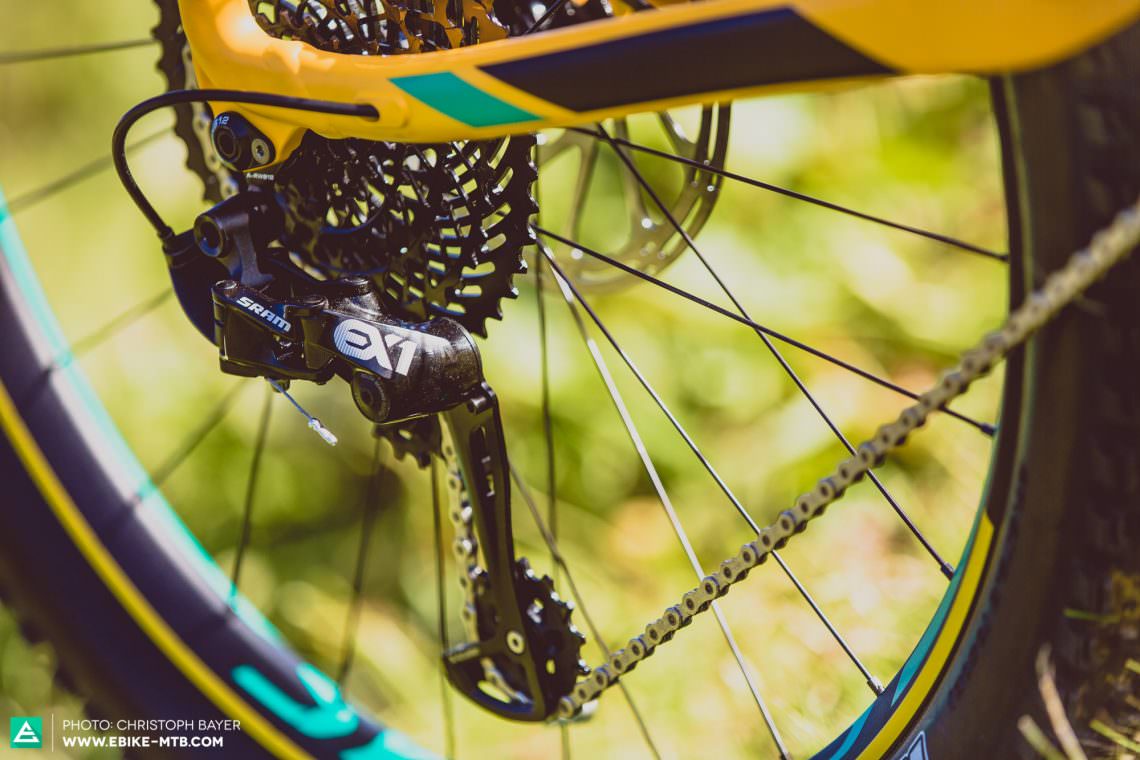EMTBing has its own secret language. That’s exactly why novices can sometimes find themselves in awkward situations. Fortunately, we’re here to help! In this article you will find all the basic notions and jargon that will get you out of trouble when riding your bike or discussing eMTB topics.
Pedelec (Pedal Electric Cycle)
Also known as an ebike in colloquial language, a Pedelec is a bicycle with electric pedal assistance up to speeds of 25 km/h (in Europe). The power of the motor is usually limited to a maximum of 250 W.

S-Pedelec
The S-Pedelec is a bike with electric pedal assistance up to a speed of 45 km/h. It has a motor with a permanent output of up to 500 W and requires registration and insurance. The S-Pedelec also requires a moped, motorcycle, or car driving licence.
Battery capacity (Wh)
The capacity of a battery is measured in watt-hours (Wh). There are many different brands and models on the market, and all have different characteristics. You’ll find anything from a basic 250 Wh battery to powerful 1,000 Wh double-battery solutions. As a general rule, we can say that the higher the watt-hour rating of a battery is, the higher its range. The weight of the battery is proportional to its capacity.
Torque
Torque is measured in Newton meters (Nm) and describes the rotational power of the motor that is used to assist the rider while pedalling. The higher the torque, the stronger the support the rider gets.
Watt (motor power)
The law limits the nominal power of an eMTB motor to 250 W. However, depending on torque (Nm) and cadence, all motors reach much higher power output peaks in the short term.

Battery range
Battery range depends on many factors: battery charge status, capacity, which support level you’re using, body weight, backpack weight, gradient, air temperature, cadence, terrain, tire pressure, tires, etc. Because so many factors can influence the range of a battery, it is impossible to settle for a standard range-per-charge rule. The same goes for the elevation gain you can squeeze out of a fully-charged battery.
Walk-assist
The walk-assist function can be activated with a button on the handlebar-remote. When this is activated, the motor pushes the bike with a speed up to 6 km/h without you having to pedal. This saves you precious energy in walking sections.
Gear ratio
The gear ratio refers to the ratio between the front chainring and rear sprocket. To be able to pedal at different speeds with the same cadence, the gear ratio must be adjusted by changing the gears.
Gear range
The gear range is the difference between the highest and lowest available gears. If we take the eMTB-specific SRAM EX1 group as an example, its 8-speed/ 11 to 48 t cassette has a gear range of 436%. You can work the gear ratio out yourself: 48 (largest sprocket) : 11 (smallest sprocket) x 100 = 436%.

Travel
Travel is the amount your fork or rear suspension can compress and extend. The longer the travel is, the better the suspension can compensate for the irregularities of the trail. For a comfortable ride on an eMTB we recommend a travel of around 150 mm.
Sag
Also known as “negative travel,” the sag is the amount a fork or rear shock compresses under your body weight whilst sitting still on the bike. Sag allows the suspension to compensate for the imperfections of the trail for more traction and better bike control. The sag normally sits between 20% and 30% of the total travel, depending on riding style.

Rebound damping
The rebound damping allows you to adjust the speed at which your fork or shock extend after being compressed. If the spring elements bounce back too quickly (low rebound damping) the bike will feel sketchy and uncontrolled. Too much rebound damping, on the other hand, can cause the spring to recover too slowly. In this case you’ll end up using only part of the travel and riding with a compressed fork when you hit multiple bumps.

Compression
Compression settings allow you to adjust the sensitivity of your fork or rear shock. Some models feature a low-speed compression setting which controls the slower movements such as braking. Additionally, high-speed compression controls how the suspension behaves with fast impacts.
Dropper seatpost
A dropper seatpost can be adjusted in height via a remote on the handlebar. This makes it easier to get on and off the bike and also gives you more confidence on downhill sections.

Now you have the most important technical terms on hand, but sometimes facts and figures are not enough. There are still many controversial opinions on the subject of eMTBs and you should be equipped with a few powerful arguments for your next trail talk. On our website, we’ve collected 11 arguments that’ll stop anyone and everyone from hating on E-MTBs!
Did you enjoy this article? If so, we would be stoked if you decide to support us with a monthly contribution. By becoming a supporter of E-MOUNTAINBIKE, you will help secure a sustainable future for high-quality cycling journalism. Click here to learn more.
Words: Photos: Christoph Bayer, Trevor Worsey, Valentin Rühl









